
|  |

|  |
 e-mail: khokar1960@gmail.com Matters that matter July 29, 2024 Guru Shishya Parampara matters. In this month that was, last week was guru purnima on 21st July, a day when we propitiate our gurus. What's left of the tradition really? Does the core kernel remain or its mere shadow? Shops that are run for profit; egos larger than talents and output less than desirable basic quality in art of dance? Okay, if that sounds too harsh then let's dilute it a bit to say, 30 years old as gurus sound childish; arangetrams done in six months of learning is a joke! And teachers who don't know much, except items, are a blot on this exalted soul of Indian traditional art learning systems. Better still, my blood group being be positive (B+) ,I'd say these attempts at art keep some children engaged with the arts, parents involved with their children's welfare and many kids off drugs and violence on the streets as we often see in the West.  East or West, dance is the best health fad now. Many are now positioning their wares as wealth of health and in the process selling ordinary dance lessons as qualified callisthenics. Then too, add some nice name and 2k followers of fake book and hey presto! One has a good recipe for success. This is not to put down the genuine teacher still trying to be guru. There are many. These are the do-gooders in society who take upon themselves the task of rearing a generation of students to some artistic paths and to add to society in some way, without causing disruption in daily lives of school or college. What's a guru? In 2024 if I've to still point that out as I had to in Pune some years ago (and that sowed the seeds of a Pune Special issue of attendance) then it means the parampara has not percolated in. One popular dancer stood up in a huge Film Archives hall at end of the two day discourse to ask, "What's the difference between a guru and a teacher" and readily I could say: morals. A guru is morally responsible for shishya/s. S/he gives morals, a teacher gives lessons. A guru gives freely, a teacher charges. A guru is for all seasons; a teacher is for a reason. And so on. This question has vexed many for long and I put a whole issue of attenDance yearbook together some years ago. Here's the cover to learn more. 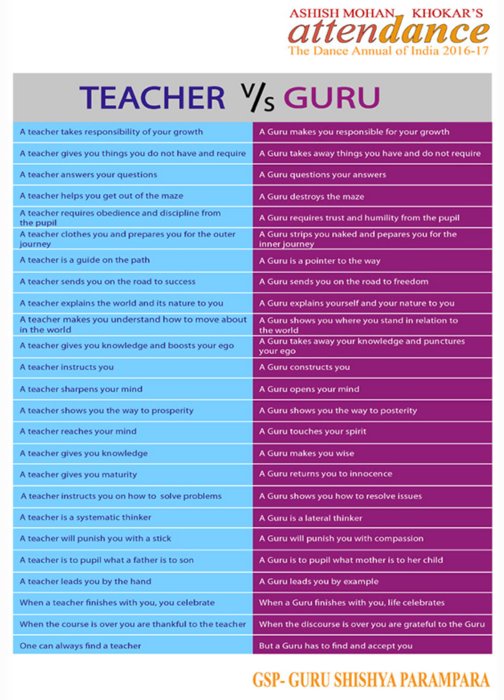 Today, a guru in dance means training with many in class, public outreach, often factory-type cloning of items and occasional filler items to show. Group work has taken over and it also helps the guru's institutions gets sundry shows. And more students. Nothing wrong with neighbourhood classes, so long as they render even basic service to art. Real gurus are not in the market. They are not even interested in having products as shishyas and they don't care if they are famous or not. Fame means they have to be relevant, no? Real gurus don't even want to be relevant. Their art is for themselves and their communion with God. 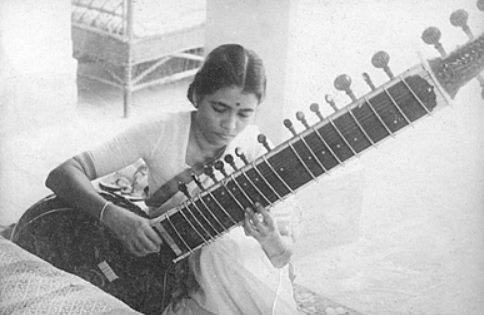 Annapurna Devi Is there such a guru? Annapurna Devi comes to mind. I'm sure you are searching Wikipedia or Google and realise there are very few entries. Told you such folks are not in the market, definitely not on SM or insta. Annapurna Devi was Ustad Allauddin Khan Sahib's daughter, just like Ali Akbar Khan sahib was his son. Ravi Shankar, Timir Baran, Nikhil Banerjee, Vishnudas Shirali were Ustad Allauddin Khan Sahib's well-known shishyas. He left his native Bengal (later, Bangladesh) to settle in a godforsaken hamlet in Panna district near Bundelkhand in Madhya Pradesh, a place called Maihar. Ravi Shankar trudged there to learn. And to cement the bonds, married Annapurna Devi. What a huge TALENT. She was deep and quiet and her art was a gift of the gods. When she performed, the world stopped. A few students did learn from her, like Hari Prasad Chaurasia. Ravi Shankar left and settled in USA. She lived in Bombay. Didn't meet anyone and gave classes to a few. A recluse, her art outlived her. That's called a real guru. Never charged, didn't care for name or fame and till her end, all respected her. Today, Pt.Kailash Sharma is like that. Delhi based, he teaches many the flute he learnt from his own guru late Prakash Saxena who learnt from guru Prakash Wadhera who was also a good critic. Kailash is a genuine seeker like Annapurna Devi and is looking for perfection in music. Madhavi Mudgal's father Pt Vinay Chandra Maudgalya also taught Kailash Sharma. In Delhi today, he is the most sought after flautist but also the most low key. One would say that was then. True. But art calls for sacrifice. Mere performance and visibility is not everything. Abhyas is. Today with every youngster busy making Insta reels, one wonders to what end? There are some busy bodies whose whole day revolves around being famous in a limited way. Then what? In dance, do we find Annapurna Devis? Pankaj Charan Das in Odisha was one. Sat by himself, those who wanted to learn - Yamini Krishnamurti or Ritha Devi - went to him or got him to where they lived. Nataraja Ramakrishna in Hyderabad was another, the principal propounder of Andhra Natyam, usurped by others and recreated to sound like a Jurassic park of dance! Peria Sarada amma of Kalakshetra was a real guru. She gave freely despite living frugally. So many seniors like Kalanidhi Narayanan and Kapila Vatsyayan used to come to her to learn. Her accomplice in art education was G. Sundari. Madras K. Saroja was another. Married to Mohan Khokar, she never sought attention or acclaim and those who wished to learn found her by the sea in Madras and learnt. She rarely asked for monies. What a student could give they left in her Puja room. She had many coming from abroad because they were discerning and didn't want to learn for name or fame, just art for art sake. Her own guru was like that. He taught Ram Gopal, Mrinalini Sarabhai, Nala Najan, Janak Khendry, Baby Kamala, even Rukmini Devi and remained low key. He didn't even charge. His name was Kattumannarkoil Muthukumaran Pillai. 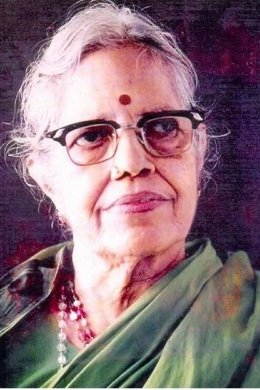 Guru Peria Sarada 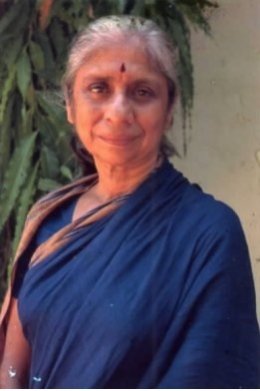 G Sundari Today? Guru Aloka Panikar. Totally neglected by art fraternity, living in centre of Delhi, she carries on teaching at 80+ the best in Odissi foundation. No award has come her way proving once again awards mostly come from lobbies, pushing and canvassing and not by credibility or art alone. Then too, the numbers she has trained in Mayadhar Raut style of Odissi is large. In South there was also Shyamala, disciple of Balasaraswati. She also taught without fuss or fanfare. There are hidden gems everywhere like Kuchipudi guru Vanashree Rao in Delhi. She doesn't run a dance factory but has five or six worthy students and how much she does for them! For her only male student Wasim Raja, she spent her own monies to fly to Baroda recently - on eve of guru purnima - to surprise him at his debut at MSU performing arts department. Which guru does that? They often extract last pound from students (of flesh or funds!). 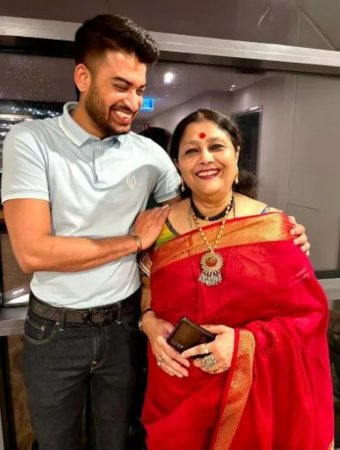 Guru Vanashree Rao with shishya Wasim Raja This whole hyped-up gurudom thing today springs from greed if not need to earn name then fame; money becomes a by-product. Dance is a tool now to earn not merely to impart knowledge. Knowledge? What's that? I ask basic questions in dance camps I conduct at colleges and universities as value addition, often for free. I ask simple questions: watching Uday Shankar film, who was Uday Shankar? Blank. Ram Gopal? Blank. Astad Deboo. Blank. Millennials don't know of recent dancers and they are in the dance field. Whose failure is it? Teachers. They are themselves item teachers, not real gurus. They also often don't want to share much, lest their students know how little they really know! Or they don't want others to get glory, even posthumously. Most importantly, many fear if they praise other gurus or styles then their student might leave them and go to that source. In another group of eager beavers, I shared a rare film on Ruth St. Denis and Marwari dance item appeared in a sequence and my question was not even about dance but general: the word Marwari comes from? No answer. Marwar, I had to quip. And the capital of Marwar is? One PYT says: Jaipur! That will start a war in that region. Marwar's capital is Jodhpur. The new union Culture Minister Shekhawat is from there. He is the MP of Jodhpur. Our cultural illiteracy is complete. What are teachers teaching in school and colleges? How will these kids ever know or grow? Their education, or lack of it, is in direct proportion to the time spent addicted to cell phones. What do they see or search on it? The problem is compounded by agencies of patronage giving scholarships and grants. Do they have qualified people sitting on committees or same "gurus" who promote their own favourites? The whole award structure is faulty. The minute one has to fill forms and apply it means canvassing starts. While that ostensibly makes for a level playing field, where does it lead to? Mediocrity. 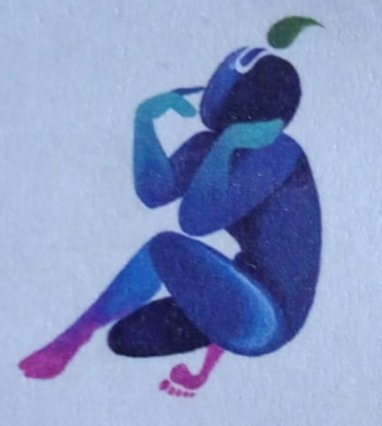 Is India today a country of mediocre folks in every field? Look at our universities and its art departments. Very few teachers write their Papers they are supposed to; very few have published a book and most PhDs are sub-standard, when not spurious. In this scenario, who will bell the cat? Who cares even? For a great culture to be left with its shell - mere skin of banana - is a national shame. I hope from this it will arise, awake and this great country will once again shine. Ache din ayenge! 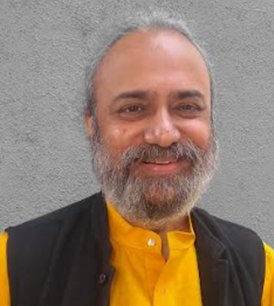 Critic, connoisseur, historian, author, artivist, archivist, administrator and more - editor, columnist and mentor Ashish Khokar remains true to his muse. More on attendance-india.com Response * Vanakkam Anna, You make a compelling point about the value of art and the role of gurus in passing down wisdom and tradition. Art serves as a powerful tool for self-understanding and for conveying deeper truths and wisdom to others. It's indeed unfortunate that many gurus, who often dedicate their lives to teaching and sharing knowledge selflessly, face several difficulties. On the other hand, simple teachers who might be more focused on their personal gain can sometimes overshadow the selfless dedication of true gurus. Encouraging the younger generation, especially young artists, to learn about and appreciate traditional lifestyles and the importance of gurus is crucial. This cultural transmission can start at home and should be part of a broader effort to instill respect for traditional wisdom and selflessness in children. Those who have something in their hand can also hold the gurus' hands and feet in support. It is genuinely our responsibility as human beings. How? Starting this education at home is a vital step. Families can play a significant role in teaching children about the value of selflessness, the importance of preserving cultural heritage, and the respect for those who dedicate their lives to teaching and guiding others. This foundation can help ensure that future generations carry forward these important values. Thank you for the wonderful article. - Gops (Aug 2, 2024) * Yes, sir, art takes over fame. Nice to know about great gurus and wonderful qualities an artiste must possess. - Archana Chetana (July 31, 2024) Post your comments Please provide your name and email id when you use the Anonymous/blog profile to post a comment. All appropriate comments posted with name and email id in the blog will also be featured in the site. |